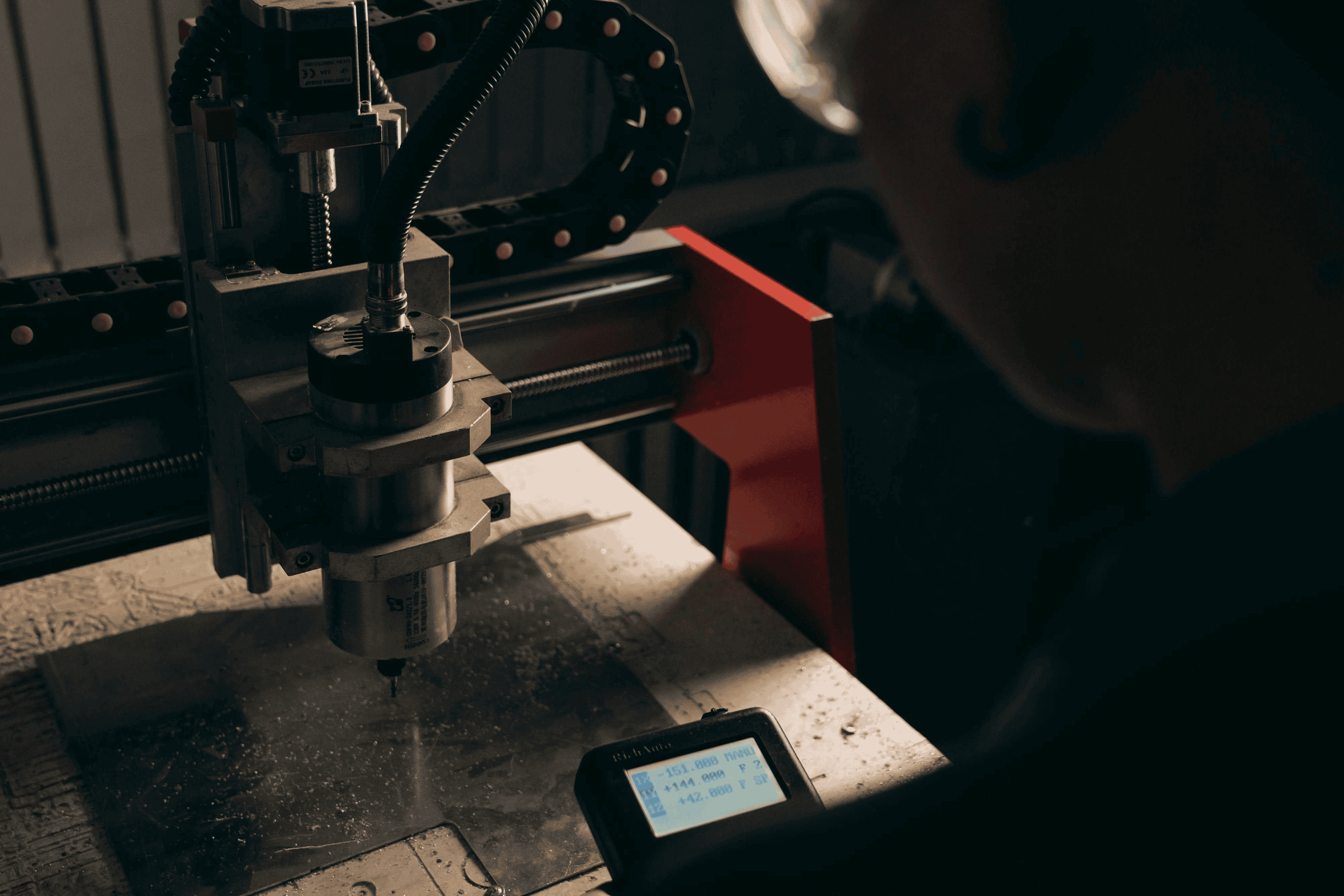Custom Fabrication

Metal stamping parts are components formed from sheet or coil using presses and matched dies to cut, bend, draw, or coin precise features. The process turns flat stock into three dimensional geometry with high repeatability. Typical operations include blanking, piercing, forming, flanging, embossing, and deep drawing. Progressive dies can combine many of these steps so each stroke advances the strip and adds features until a finished part separates from the web.
Metal stamping parts and production runs setup with press tooling.
Accuracy depends on tooling design, press tonnage, shut height, feed systems, and lubrication. Springback, burr control, and edge quality must be managed through die clearances, tool steel selection, and secondary deburr where required. For consistent fitment, engineers specify dimensional tolerances and geometric controls like position, flatness, or perpendicularity. When tolerances tighten, tooling complexity and maintenance usually rise, which should be considered when scoping production volumes.
Common alloys include low carbon steel for strength and cost efficiency, stainless for corrosion resistance, and aluminum for weight savings and formability. Copper and brass appear in electrical parts for conductivity. Thickness spans light gauge foils up to heavy stock that requires higher tonnage and robust dies. Material properties like yield strength and elongation influence draw depth, bend radii, and the risk of cracking. Designers should account for springback in bends, often using empirical data or simulation to dial in angles that settle at the intended final geometry.
Tooling is the heart of metal stamping parts. Progressive dies enable high throughput by chaining operations, while compound and transfer dies suit specific geometry and part handling needs. Tool steels, coatings, and die inserts fight wear at high volumes. Upfront tooling cost is capitalized and amortized across production; therefore long planned volumes drive down effective cost per part. For short runs or early validation, soft tooling or single stage dies can reduce lead time, with the plan to graduate to a progressive tool when volumes justify the investment.
Quality plans typically include first article inspection, capability studies, and ongoing SPC on critical features. Edge conditions, hole size, slot location, and formed heights are checked against print. Surface finish may require protective films, optimized lubrication, or post processes to meet cosmetic standards. Packaging design also matters because stamped parts can scuff or distort if stacked without separators or formed nests.
Metal stamp production runs are scheduled events that balance setup time, throughput, and demand. Every changeover includes die installation, alignment, test strokes, and inspection, which means small batches carry more setup cost per unit. Larger batches reduce unit cost but increase on hand inventory and cash tied up in parts. Long run metal stamping is ideal for stable designs with steady demand because once the tool is proven, presses can run at speed with high uptime and predictable quality.
Material feed strategy also affects runs. Coil feeding shines for long runs because it minimizes handling, stabilizes strip alignment, and supports progressive tooling. Blank feed may be chosen for shorter runs or complex shapes that benefit from laser blanking upstream. Lubrication selection, die maintenance intervals, and scrap removal are tuned to keep the press at target strokes per minute without compromising part quality.
Key factors when choosing run length:
Short runs aid engineering changes, revision control, and pilot builds. Medium runs can match a quarterly buy plan to limit inventory exposure. Long runs cut unit cost the most but commit material and capacity for longer windows. The right choice depends on total landed cost, not just press time.
A smart path starts with design for manufacturability, where bend directions, hole to edge distances, and reliefs are reviewed against known forming rules. Early parts might come from laser cut blanks with press brake forming to prove function and verify fits. When the design is frozen and demand is clear, progressive tooling is built, sampled, and approved with capability data that validates repeatability.
Packaging and logistics close the loop. Stack strategies, separators, or custom trays protect edges and surfaces. Clear labels and revision control prevent mixing stocks. When volumes climb, long run metal stamping schedules can be synchronized with supply chain needs to feed downstream assembly on a predictable drumbeat.
This is where a build partner matters. Stamped brackets, panels, and mounts rarely live alone. They connect to assemblies, accept fasteners, and interact with wiring, insulation, or body structures. Integrating stamped parts with fabricated elements, machined inserts, or welded sub assemblies keeps the end product tight and repeatable. If you are moving from pilot to volume and need fixtures, weldments, or tailored packaging, our team can help translate drawings into production ready parts and assemblies that arrive ready to install.
For complex programs that mix stamped parts with custom fabricated components, explore our Custom fabrication shop. If you want to see how we handle forming, cutting, and assembly across materials, review our Fabrication services. To understand our approach to communication, timelines, and quality, visit Why choose OZK Customs.
When your part family is ready for consistent volume, we can align the right run strategy, validate samples, and coordinate packaging that protects finishes and dimensions. Whether you need a short bridge build or are planning sustained long run metal stamping, we focus on clear drawings, practical tolerances, and smooth handoffs so your downstream installs go faster with fewer surprises.
Have a bracket, panel, or mount that needs consistent, repeatable output? OZK Customs can translate your concept into production ready parts, align the right run strategy, and handle the build out details that keep your program on schedule. Tell us about your part and timeline, and our team will map the smartest path from print to finished component.
ADDRESS:
6159 E Huntsville Rd, Fayetteville, AR 72701
PHONE:
(479) 326-9200
EMAIL:
info@ozkvans.com